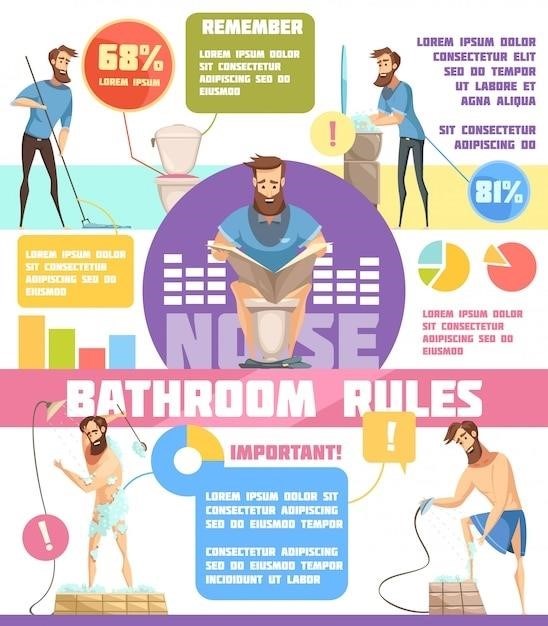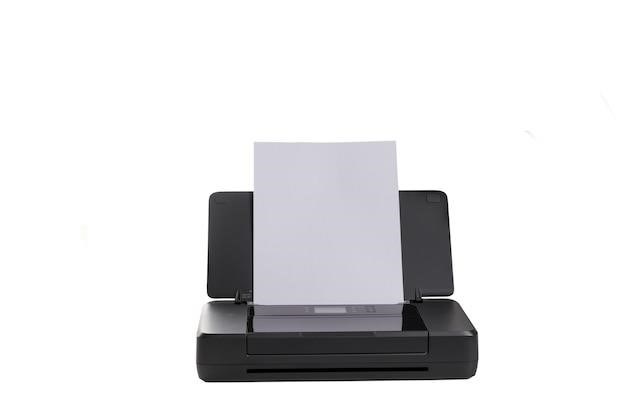
Bed Bath Procedure⁚ A Comprehensive Guide
This guide details the essential steps for performing a bed bath, a crucial nursing procedure for maintaining patient hygiene and comfort. It covers various bath types, preparation, step-by-step washing, perineal care, post-procedure actions, safety, and legal considerations. Proper technique is vital for patient well-being and infection control.
Introduction and Purpose
A bed bath is a fundamental nursing intervention providing hygiene for patients unable to bathe themselves due to illness, injury, or mobility limitations. Its purpose extends beyond simple cleansing; it contributes significantly to patient comfort, well-being, and prevention of skin breakdown. Regular bed baths help maintain skin integrity, preventing infection and promoting circulation. The procedure also offers an opportunity for nurses to assess the patient’s skin condition, identifying any potential issues like rashes, pressure ulcers, or dryness. A thorough bed bath promotes a sense of dignity and self-esteem, improving the overall patient experience. This comprehensive guide outlines the techniques and considerations for providing safe and effective bed baths, emphasizing patient-centered care and infection control.
Types of Bed Baths
The type of bed bath administered depends on the patient’s condition and capabilities. A full bed bath involves washing the entire body while the patient is in bed. A partial bed bath focuses on cleansing only specific areas, such as the face, hands, underarms, and perineal region. This is suitable for patients who can perform partial self-care. A tub bath, if the patient’s mobility allows, offers more thorough cleaning and may be preferred. A shower, if accessible, provides a similar level of hygiene. The choice also considers the patient’s preferences and any medical restrictions. For instance, patients with certain wounds or skin conditions might require modified techniques or specialized cleansing agents. The nurse assesses the patient’s needs and capabilities to determine the most appropriate type of bed bath, ensuring both hygiene and patient comfort.
Preparation⁚ Gathering Supplies and Assessing the Patient
Before commencing the bed bath, meticulous preparation is crucial. Gather all necessary supplies⁚ basin(s) for warm water, washcloths, towels, soap (preferably mild, unscented), lotion, disposable gloves, a bath blanket or large towel for patient privacy and warmth, and any prescribed cleansing agents. Assess the patient’s condition⁚ note any skin sensitivities, wounds, or areas requiring special attention. Check for any existing pain, discomfort, or mobility limitations. Explain the procedure clearly and obtain informed consent. Ensure the patient’s privacy by closing curtains or doors. Adjust the bed to a comfortable working height, locking the wheels for safety. Check the room temperature to ensure a comfortable environment, adjusting as needed. Pre-assessing the patient and having all necessary supplies readily available streamline the process and contribute to a more efficient and comfortable experience for both the patient and the caregiver.
Procedure Steps⁚ Washing the Body
Begin by washing the face, using a clean washcloth for each eye, moving outwards to avoid cross-contamination. Proceed to the neck, upper chest, and arms, working systematically from the cleanest to the dirtiest areas. Rinse thoroughly with clean water. When washing the patient’s back, assist them to turn to one side, supporting their weight as needed. Wash gently but thoroughly, paying attention to areas prone to skin breakdown. Turn the patient to the other side to complete the back washing. Next, wash the legs and feet, ensuring to clean thoroughly between the toes. Remember to rinse all areas meticulously to remove soap residue. Throughout the process, maintain a gentle touch, avoiding harsh scrubbing that could cause discomfort or skin irritation. Use warm, but not hot, water and monitor the patient for signs of discomfort or chilling. Always ensure the patient’s comfort and dignity by providing a warm blanket and maintaining privacy. The entire process should be conducted in a calm and reassuring manner.
Perineal Care⁚ A Detailed Approach
Perineal care requires meticulous attention to detail and aseptic technique. Begin by ensuring privacy for the patient. Gather fresh, warm water and clean washcloths or disposable wipes. For female patients, gently cleanse the labia majora, then carefully separate the labia minora and cleanse from front to back, using a fresh area of the washcloth or a new wipe for each stroke. Avoid harsh scrubbing. For male patients, gently retract the foreskin if uncircumcised, cleanse the glans penis, and then the shaft, moving from the meatus outwards. Cleanse the scrotum gently. For both genders, cleanse the anal area using a fresh washcloth or wipe, moving from front to back. Rinse thoroughly with clean water, ensuring all soap residue is removed; Pat the area dry gently, avoiding harsh rubbing. Apply a gentle moisturizer if necessary. Observe for any signs of irritation, infection, or unusual discharge, and document your findings accurately. The entire procedure should be performed with sensitivity and respect for the patient’s dignity.
Post-Procedure Care⁚ Ensuring Patient Comfort
Following the bed bath, prioritize patient comfort and well-being. Gently pat the patient’s skin dry, paying special attention to areas prone to moisture retention, such as skin folds and between toes. Apply a moisturizer to prevent dryness and skin breakdown, particularly on dry or fragile skin. Ensure the patient is comfortably positioned, adjusting bedding as needed to prevent pressure points and promote relaxation. If the patient is prone to chills, provide a warm blanket or additional layers of clothing. Offer the patient fresh water or other preferred beverages to help rehydrate. Assess the patient’s overall comfort level, addressing any concerns or discomfort they may express. Check for any signs of skin irritation, redness, or discomfort and document your findings. Finally, dispose of all used materials properly according to infection control protocols, and ensure the patient’s environment is clean and tidy. Leave the patient feeling refreshed, clean, and comfortable.

Documentation and Reporting
Accurate and thorough documentation is crucial after completing a bed bath. Record the date, time, and type of bath administered (e.g., full bed bath, partial bath). Note the patient’s response to the procedure, including any observed skin conditions (e.g., redness, dryness, breakdown, rashes). Document any difficulties encountered during the bath, such as limited mobility or patient discomfort. If any specific concerns arose, such as changes in skin integrity or unusual patient behavior, these should be detailed in the patient’s chart. Include details about the products used, such as type of soap and lotion. If the patient expressed any concerns or discomfort, those should also be documented, along with any actions taken to address them. Report any significant findings or changes in the patient’s condition to the supervising nurse or physician. This comprehensive documentation ensures continuity of care and assists in identifying potential problems or trends over time, contributing to the patient’s overall well-being and effective care management.
Safety Precautions and Infection Control
Prioritize patient safety throughout the bed bath procedure. Ensure the bed is at a safe working height, locked, and properly positioned to prevent falls. Use non-slip mats to reduce the risk of slips. Maintain proper body mechanics to avoid injury to yourself. Always wash your hands thoroughly before and after the procedure, and wear disposable gloves to minimize the spread of infection. Use clean water and fresh washcloths for each body area, changing the bathwater as needed to prevent recontamination. Pay close attention to the patient’s skin condition, noting any signs of irritation, breakdown, or infection. Proper disposal of soiled linens and bathwater is essential. If the patient has any open wounds or draining sores, use appropriate barrier techniques and follow infection control protocols. Be mindful of the patient’s comfort level and adjust the procedure as needed. Communicate clearly with the patient throughout the bath to ensure their cooperation and comfort. Regularly assess the patient’s vital signs, especially if they have any underlying health conditions.
Addressing Specific Patient Needs
Individualize the bed bath procedure to accommodate diverse patient needs. Consider the patient’s physical limitations, cognitive abilities, and any specific medical conditions. For patients with limited mobility, adjust the procedure to minimize discomfort and prevent injury. Provide additional support as needed, perhaps using pillows or positioning aids. For patients with dementia or cognitive impairment, use a calm and reassuring approach, explaining each step clearly and patiently. Respect the patient’s preferences regarding water temperature and the use of soap or lotions. Be mindful of cultural sensitivities and personal hygiene practices. If the patient has fragile or sensitive skin, use gentle, fragrance-free soaps and lotions. For patients with IV lines or other medical devices, take care to avoid disturbing or damaging them during the bath. Always maintain patient privacy and dignity. Document any specific needs or modifications made to the procedure in the patient’s medical record. If a patient has specific hygiene requirements, like the use of medicated soaps or specialized cleansing products, make sure to follow the instructions precisely.
Common Challenges and Troubleshooting
Several challenges may arise during a bed bath. Patients may experience discomfort or pain, requiring adjustments to positioning or a slower pace. Skin fragility or wounds necessitate extra care and the potential use of specialized cleansing products. Limited mobility can make washing certain areas difficult; consider assistive devices or modifying the procedure. Cognitive impairment might necessitate a simplified approach with clear communication and reassurance. If a patient becomes agitated or resistant, pause, reassess, and adjust your approach. Consider offering breaks or changing techniques if the patient tires easily. Infections can be prevented by meticulous hand hygiene and the use of clean supplies. If you encounter unexpected bleeding or skin changes, immediately notify the appropriate healthcare professional. Proper documentation of all observations and any modifications to the procedure is crucial for continuous care. Remember to always prioritize patient comfort and safety throughout the process, adapting to any unique challenges that arise.
Legal and Ethical Considerations
Providing a bed bath involves several critical legal and ethical considerations. Maintaining patient privacy is paramount; ensure appropriate draping and screen use throughout the procedure. Obtain informed consent before starting, explaining the process clearly and answering any questions the patient may have. Respect patient autonomy; allow them to participate as much as possible, respecting their preferences and limitations. Document the procedure accurately and completely, including any observations or modifications made. Maintain professional boundaries and avoid any behavior that could be construed as inappropriate or exploitative. Adherence to institutional policies and procedures is crucial, ensuring compliance with legal regulations. In cases of suspected abuse or neglect, reporting mechanisms must be followed diligently. Confidentiality must be maintained throughout the process, adhering to all relevant data protection laws. If a patient refuses a bed bath, respect their decision and document the refusal appropriately. Continuous professional development helps ensure you are up-to-date on all legal and ethical standards related to patient care.
Continuing Education and Resources
Maintaining proficiency in bed bath procedures requires ongoing professional development. Numerous resources are available to enhance your skills and knowledge. Professional nursing organizations, such as the American Nurses Association (ANA), offer continuing education courses, webinars, and publications on various aspects of patient hygiene and care. Online learning platforms provide access to interactive modules and video demonstrations of bed bath techniques, often incorporating best practices and safety guidelines. Textbooks and nursing journals publish research articles and updated guidelines on infection control and patient care. Many healthcare institutions provide in-service training programs focusing on specific aspects of patient care, including bed baths. Participating in these opportunities ensures you’re up-to-date on the latest evidence-based practices and techniques. Regularly reviewing institutional policies and procedures is also crucial for maintaining competence and ensuring compliance with legal and ethical standards. Staying current ensures you deliver safe, effective, and patient-centered care.



